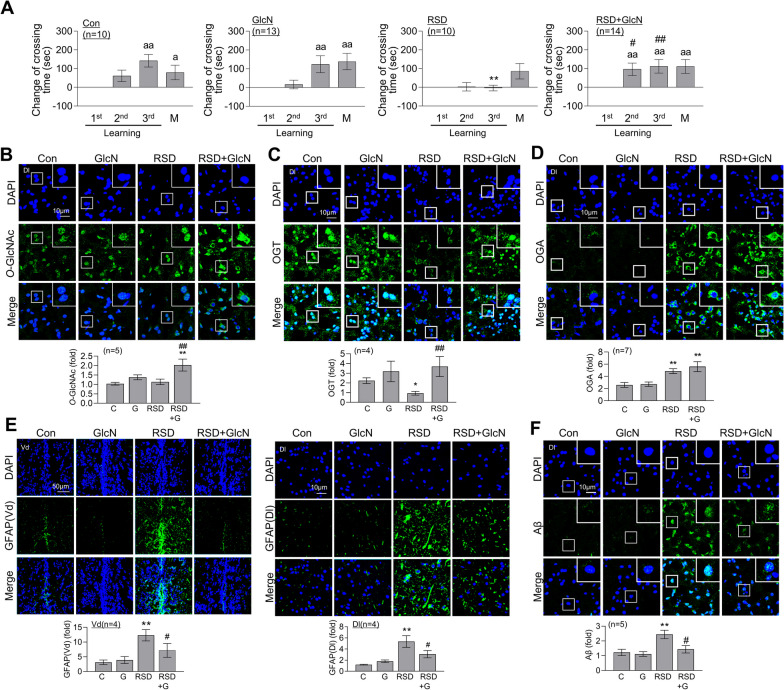Fig. 4
Restoration of RSD-induced L/M deficit, astrocyte activation, and Aβ accumulation by GlcN treatment. Zebrafish were intraperitoneally injected with GlcN (20 μg/g) on the day of SD exposure during each episode of SD throughout 5 cycles of RSD. After the final RSD induction, the fear context L/M test and brain analysis were conducted.

